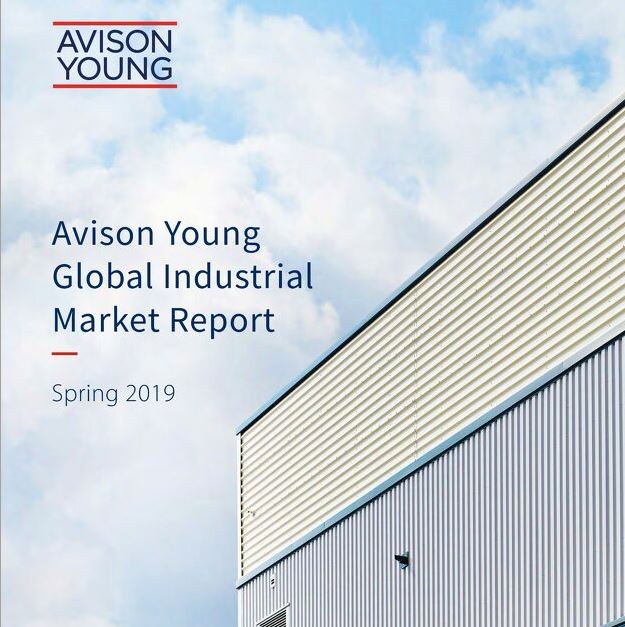Strong demand and tight supply define industrial property sector in markets around the world

Avison Young releases its Spring 2019 Global Industrial Market Report
Demand for industrial property across the globe continues to show remarkable strength in most markets. The demand for space continues to be driven by e-commerce and last-mile logistics as retailers seek further supply-chain efficiencies. Online retail giants and their third-party logistics partners are impacting market dynamics with their demand for large facilities near major cities. This trend has resulted in rising land and development costs in many key markets in which the largest companies are driving demand for customised design-build facilities that are fully automated and reliant on new technologies.
These are some of the key trends noted in Avison Young’s Spring 2019 Global Industrial Market Report, released today.
The report covers 64 industrial markets in seven countries across the globe: Canada, the United States, Mexico, Poland, Romania, the United Kingdom and South Korea.
“Today, I am delighted to share with you Avison Young’s insights into the industrial market – a sector that continues to go from strength to even more strength,” comments Mark E. Rose, Chair and CEO of Avison Young. “These insights are drawn from our annual industrial survey spanning 64 markets across seven countries and three continents, with a combined industrial stock of 15 billion square feet (bsf).”
Rose continues: “E-commerce logistics, distribution and warehousing requirements continue to drive the market and are increasing in line with online retail sales. This strong demand has driven down supply, with developers increasingly becoming more innovative in regard to maximising value through the repurposing of obsolete assets such as vacant big-box retail stores and aged office buildings, as well as exploring multi-storey facilities in a growing trend that caters to demand for close-in warehousing and distribution.”
He adds: “Investor interest in the industrial sector continues to grow unabated and the forecast for the remainder of 2019 is that industry dynamics will continue to be positive, attracting investors and resulting in low yields and rising asset values.”
The analysis also revealed that the development pipeline remains robust, in terms of both product deliveries and new space under construction. The significant level of development has seen vacancy increase in some markets. Despite this situation, nearly all industrial markets remain significantly supply-constrained. All markets monitored by Avison Young reported single-digit vacancy rates, while vacancy rates fell or remained flat year-over-year in more than half of the industrial markets surveyed. The strong demand and tight supply continue to put upward pressure on rental rates.
The industrial sector’s fundamentals continue to draw capital, as investors are attracted not only to the newest distribution and warehouse facilities, but also to the opportunity to find additional value in older assets near urban areas. The dynamics have created a competitive market, which is reflected in higher asset values and low yields.
United Kingdom
Whilst industrial continues to be the best performing U.K. commercial property sector, occupier activity for large warehousing was not immune to the pre-Brexit slowdown during the first quarter of 2019 as the industrial market came off record levels achieved during 2018. However, as online retail sales peaked at record levels in November, big-shed deals for e-commerce occupiers constituted more than a quarter of all demand.
Additionally, third-party logistics companies, including many that serve online retail contracts, accounted for a similar amount of take-up. E-commerce warehousing requirements are increasing in line with the 10% annual rise in online retail sales.
The bespoke requirements for buildings mean design-and-build pre-let activity accounted for two-thirds of take-up during the 12 months ending with the first quarter of 2019. Tenants’ intended location changes were emphasised by speculative development occurring in non-prime areas for the first time in more than a decade.
“Occupiers are placing increased importance on the availability and cost of labour,” comments Andrew Jackson, Avison Young Principal and Managing Director, Industrial, U.K. “This trend will intensify, as sites need the right employment demographics as well as an excellent location to succeed. Not only is labour more plentiful in secondary locations, but it is also more cost-efficient.”
The U.K. industrial property supply has risen during the past year, as there have been significant levels of speculative development and large second-hand units have returned to the market. However, the strong demand means that supply levels have remained relatively constrained, with the shortfall amounting to slightly more than a year’s worth of take-up based on recent demand.
Click the link here to read the full Global report.
